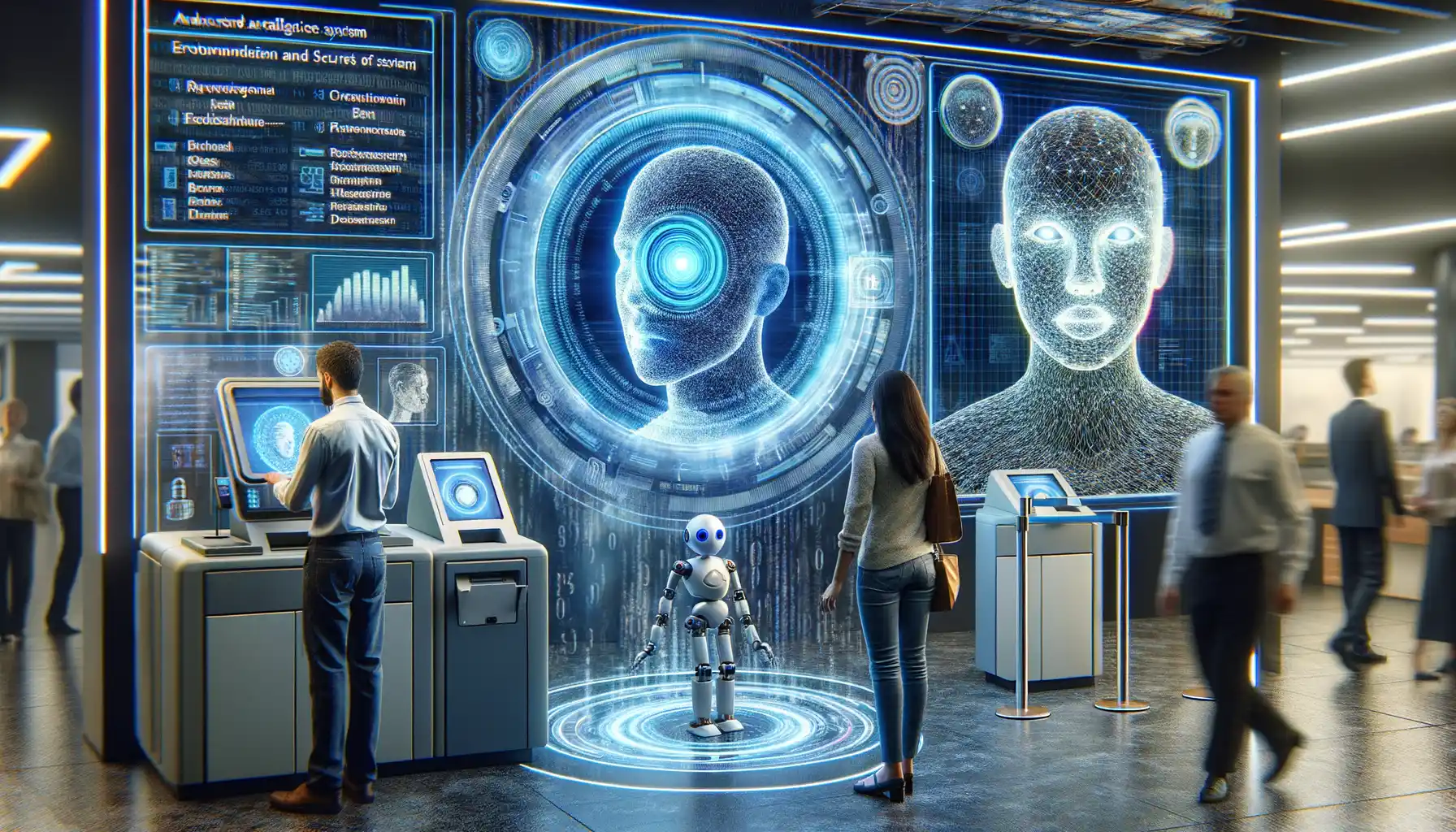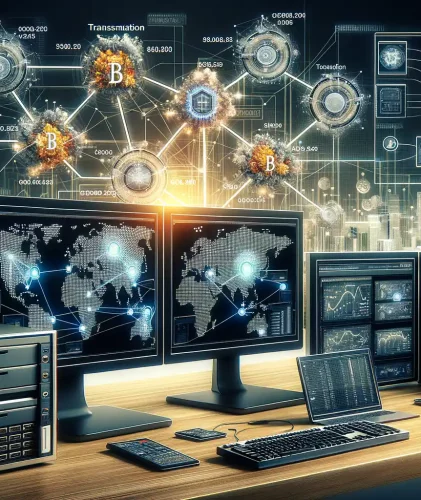Understanding Automated Intelligence in Banking
Peeking Behind the Curtain of Banking Automation
Imagine a world where your bank isn’t just a place to store money but a vigilant sentinel, silently working to safeguard your hard-earned savings. That’s the beauty of automated intelligence in modern banking—it’s like a digital guardian that never sleeps. But how does it work its magic? Let’s break it down.
At its core, automated intelligence (or AI) in banking is like your brain on caffeine—analyzing vast amounts of financial data with lightning speed. It doesn’t just crunch numbers; it recognizes patterns, flags irregularities, and connects the dots in ways humans simply can’t. Think of it this way: while a human might notice one odd transaction on your statement, AI spots trends across millions of accounts in seconds.
And what powers this brilliance? AI systems have capabilities like:
- Real-time monitoring: Constantly scanning every transaction as it happens.
- Behavioral analysis: Learning your spending habits so it knows when something’s off.
Thanks to these tools, banks today act less like old-fashioned vaults and more like high-tech fortresses protecting what’s yours.
Key Technologies Used for Transaction Monitoring

Revolutionary Tools Powering Transaction Oversight
How does modern banking achieve the Herculean task of monitoring millions of transactions every second? It’s all thanks to a cocktail of cutting-edge technologies working tirelessly in the background. Behind the scenes, these tools are like watchful guardians, each bringing a unique superpower to the fight against financial crime.
The Silent Force: Real-Time Data Analytics
Here’s where the magic happens: real-time analytics. Imagine a system so sharp it can pause a fraudulent transaction mid-flight. By processing enormous amounts of data literally as it streams in, banks can compare current activities with historical trends. Is a customer suddenly sending thousands of dollars overseas at 2 a.m.? A red flag is instantly raised.
And don’t forget the backbone of all this—blockchain technology. Its unalterable ledger adds transparency and security, ensuring no sneaky edits after the fact. Together, these technologies weave an almost impenetrable safety net, designed to outsmart even the craftiest fraudsters.
How AI Algorithms Identify Suspicious Activities

Peeking Beneath the Surface: How AI Sees Patterns
Picture this: your bank account is like a serene pond, calm and predictable. Suddenly, ripples appear—unusual ripples. This is where AI algorithms step in as the watchful guardians. They’re trained to notice what humans might miss: those subtle, almost imperceptible patterns signaling something could be awry.
Using advanced techniques like machine learning, these algorithms essentially develop a sixth sense. Consider this: if someone typically makes small, steady purchases, then suddenly buys an expensive suitcase in one country and flight tickets in another within minutes—ding! That’s suspicious. AI recognizes that as a pattern break.
The Secret Ingredients of Suspicious Activity Detection
How does AI flag these activities? It works like a finely tuned orchestra:
- Behavioral Analysis: Mapping what’s “normal” for an account based on past transactions.
- Anomaly Detection: Pinpointing out-of-the-ordinary actions, like a high-value wire transfer from an account that’s usually dormant.
- Network Relationship Mapping: Spotting subtle links between seemingly unrelated accounts often used for laundering money.
The brilliance lies in the speed—what could take days for human teams happens in seconds. It’s not magic; it’s cutting-edge math and logic.
Case Studies: Success Stories in Fraud Detection

Beating the Odds: Real-Life Wins Against Fraud
Picture this: a bank in Southeast Asia was battling a relentless surge of fraudulent credit card transactions. Traditional methods were overwhelmed, costing both time and millions of dollars. Enter their secret weapon—an AI-driven fraud detection system. Within weeks, the results were nothing short of jaw-dropping. The system flagged anomalies with surgical precision, identifying fraud patterns that had flown under the radar for months. The most impressive part? It reduced false positives by 40%, sparing loyal customers from unnecessary account freezes.
In one standout case, the system intercepted a coordinated attack where fraudsters attempted to siphon funds using hundreds of near-identical accounts. Spotting subtle differences in transaction timing and device usage, the AI exposed the scheme before it could escalate further. The relief on the banking team’s faces? Priceless.
How a Small Credit Union Outsmarted Sophisticated Scammers
Fraud isn’t just a big-bank problem. A small credit union in the Midwest faced a growing threat: scammer networks exploiting weak points in online transfers. Armed with machine learning algorithms, they fought back. Here’s what happened:
- The system detected unusual spikes in small-dollar transfers—a classic sign of account testing by fraudsters.
- It also flagged specific IP addresses linked to high-risk regions, shutting down access within minutes.
The result? The credit union saved $2.3 million in potential losses and rebuilt trust among its members. Even David can outsmart Goliath with the right tools!
These stories remind us: every flagged transaction is more than numbers; it’s someone’s savings, livelihood, or dream kept safe.
Future Trends in Banking Automation and Security

The Technological Metamorphosis of Banking
The world of banking is spinning faster than ever, with innovation reshaping not only how we think about money but how we protect it. In the near future, expect to see breakthroughs that feel like they’ve leapt from the pages of a sci-fi novel. For starters, biometric authentication is set to replace outdated passwords entirely. Imagine walking into a bank—or logging into your account—with nothing more than your heartbeat or even your unique typing pattern acting as your signature.
AI-powered systems will also become sharper and more “intuitive,” spotting fraud so swiftly it’ll feel like they’re catching criminals in real time. But here’s where it gets especially exciting: these systems won’t just react—they’ll predict. Using machine learning to anticipate suspicious behavior before it even happens, they’ll make banking feel less like a worry and more like second nature.
- Real-time micro-learning: AI learning from each transaction as it happens.
- Blockchain-integrated security reinforcing every step of the process.
- Human-AI collaboration blending judgment with speed.
Security That Feels Straight Out of Tomorrow
Picture banking systems so smart they adapt to emerging threats instantly. This isn’t futuristic fantasy; this is the promise of quantum computing. Soon, it may become the weapon of choice for encrypting sensitive information, wrapping your financial data in a digital vault no hacker—or even supercomputer—can break into.
Yet, automation won’t make things robotic. Expect hyper-personalized systems that know you better than your best friend. If suddenly you’re transferring a large sum of money overseas at 2 a.m., your bank might pause—not to scold you—but to ensure you’re in the driver’s seat. This tailored level of caution could be the bridge between human instinct and AI precision.
It’s clear: the future of banking isn’t just about keeping up—it’s about staying ahead in ways that feel almost magical.

